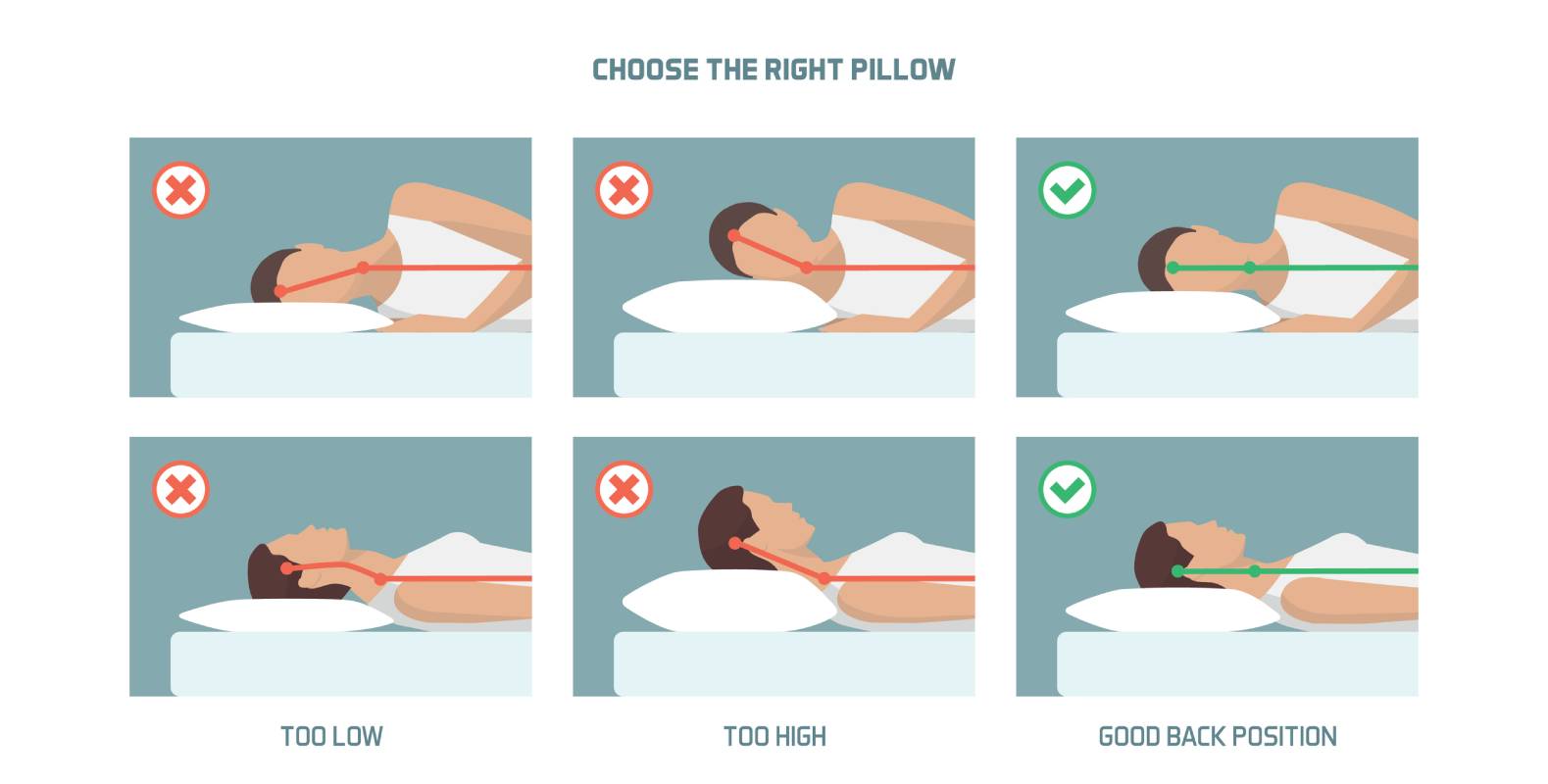Sufficient sleep quantity and quality are essential to good health and quality of life.1,2 Poor sleep, in contrast, can lead to neck and back pain, affecting many people across the globe in this day and age.3 However, back and neck health can be maintained using a variety of different approaches, including correct posture while sleeping.4 This has led to the field of ergonomics for sleep.
In order to maintain a healthy back and neck, it is important to sleep on one’s back or side rather than stomach whenever possible: Sleeping on one’s back results in the least amount of pressure, followed by sleeping on your side.
When sleeping on one’s back, a pillow should ideally be used to support the neck and knees. When sleeping on one’s side, however, pillows should ideally be used under one’s ear and between one’s knees in order to maintain maximal spine alignment.5 Finally, a stomach sleeper should use a small pillow to maintain their head in a neutral or aligned position.
When moving around during sleep, it is important to try to move one’s entire body as a unit, keeping ears, shoulders and hips aligned.6 Excessive twisting can strain the body and lead to discomfort or pain after waking up.
Ergonomics experts also recommend having a mattress that is firm enough to provide substantial back support and alignment during sleep; in addition, stomach sleepers require firmer mattresses than back or side sleepers. In general, mattresses with convoluted foam (which is soft but resilient) tend to provide sufficient support and comfort, while coils do not affect the quality of a mattress much. Any mattress should be replaced every 8-10 years.5
In the end however, choosing a mattress remains a highly personal endeavor: Individuals should always test out mattresses to ensure personal comfort.
Since a pillow should fully support the head and fill the neck curve, selecting a pillow should take into account one’s preferred sleeping position, the firmness of one’s mattress, and the depth of one’s neck curve.
For back sleepers, the pillow should fill in the space between the neck and bed. If an individual can see their feet though, the pillow is too big. For side sleepers, the pillow should fill in the space between the ear and bed. Finally, for stomach sleepers, a small pillow should be used to simply level the head.
In general, the softer the mattress, the thicker the pillow has to be to meet these criteria – fortunately, a pillow can easily be modified by removing or adding foam padding or towels.
Getting good, consistent sleep is also crucial to overall health. To this end, it is important to go to bed and wake up at around the same time daily, ensure one’s bedroom is dark and quiet, hide away any electronics, and avoid stimulants or alcohol before going to sleep.7
Sleep ergonomics is key to maintaining good back and neck health. Abiding by specific guidelines when selecting a bed or pillow and sticking to good sleeping habits will prevent unnecessary pain and maximize back and neck health down the road.
References
1. Sezgin, M. et al. Sleep quality in patients with chronic low back pain: A cross-sectional study assesing its relations with pain, functional status and quality of life. J. Back Musculoskelet. Rehabil. (2015). doi:10.3233/BMR-140537
2. Mukherjee, S. et al. An official American Thoracic Society statement: The importance of healthy sleep: Recommendations and future priorities. Am. J. Respir. Crit. Care Med. (2015). doi:10.1164/rccm.201504-0767ST
3. Dionne, C. E. et al. Back to the Future: A Report From the 16th International Forum for Back and Neck Pain Research in Primary Care and Updated Research Agenda. Spine (Phila. Pa. 1976). 47, (2022). doi: 10.1097/BRS.0000000000004408.
4. Back and Neck Pain | Johns Hopkins Medicine. Available at: https://www.hopkinsmedicine.org/health/conditions-and-diseases/back-pain. (Accessed: 15th September 2022)
5. Sleeping Posture | Back Safety | Ergonomics | Environmental Health & Safety | DePaul University, Chicago. Available at: https://offices.depaul.edu/environmental-health-and-safety/ergonomics/back-safety/Pages/sleeping-posture.aspx. (Accessed: 15th September 2022)
6. Good Sleeping Posture Helps Your Back – Health Encyclopedia – University of Rochester Medical Center. Available at: https://www.urmc.rochester.edu/encyclopedia/content.aspx?ContentTypeID=1&ContentID=4460. (Accessed: 16th September 2022)
7. Sleep Ergonomics – ACA Hands Down Better. Available at: https://handsdownbetter.org/sleep-ergonomics/. (Accessed: 16th September 2022)
